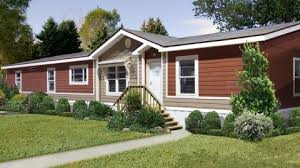Manufactured Housing Presents A Solution To The Home Affordability Squeeze
(The following contains excerpts from a Feb 8,2022 online Bankrate article by Jeff Ostrowski, titled “As affordability squeeze tightens, manufactured homes could offer some relief.”
Amid a historic housing boom, one that’s pushing homeownership out of reach of many Americans, manufactured housing presents a solution to the affordability squeeze.
Because manufactured homes meet the same building standards as site-built homes, they are able to be financed with a Federal Housing Administration mortgage, as well as loan giants Fannie Mae and Freddie Mac backing mortgages on higher-end manufactured homes.
“When you look at the quality of our construction, some people think that we are talking about grandma’s trailer, and that’s clearly not what we are producing today,” says Lesli Gooch, executive director of the Manufactured Housing Institute, an industry trade group.
Manufactured housing is significantly less expensive than site-built construction. The price per square foot for manufactured homes in 2021 was $57 per square foot, well below the $119 average for traditional homes (a figure that excludes land cost), according to the Manufactured Housing Institute.
The savings come because, compared with painstaking constructing a traditional house on a vacant lot, it’s more efficient to build a house in a factory and then quickly assemble on site.Traditional houses are built from the ground up by teams of sub contractors, and work unfolds over the course of several months.
Stereotypical Challenges Remain
Despite the cost advantages, manufactured homes remain an overlooked and unloved corner of the housing market. More than 21 million Americans live in manufactured homes, the Manufactured Housing institute estimates, but the property type remains saddled with stereotypes.
“One of the challenges we are having is the stigma around our homes,” Gooch says. “When people hear manufactured homes, they think of mobile homes. They think of trailers. They are not thinking of the types of homes we are building today. We need to overcome that impression that some people have,”
Those negative impressions are deeply rooted. Many consumers, real estate agents, lenders, appraisers and econmists associate manufactured housing, to one degree or another, with low-value properties in undesirable areas, a recipe for depreciation rather than appreciation…. (Editor’s note: It is reasonable to assume that manufactured home mischaracterizations voiced by traditional home builders, sellers and suppliers are not likely to abate – for competitive reasons).
Manufactured Housing Gaining Momentum
In a recent surge of attention, the affordability crunch has focussed new attention on factory-built homes. Gooch, head of the Manufactured Housing Institute, addressed menbers of the National Association of Realtors, the nation’s largest trade group, in a webinar.
And the Lincoln Institute of Land Policy in January urged Fannie and Freddie to finance more manufactured homes as a way to help more Americans afford homes. The recommendations came in part because makers of manufactured homes are building higher-quality products, says Jim Gray, senior fellow at the Lincoln Institute.
“In the last few years, the manufactured housing industry has shifted toward building homes that are indistinguishable from site-built homes,” Gray says.
Traditional Home Mortgages Available For Today’s Manufactured Homes
A majority of manufactured homes are situated on lots the purchaser owns but elects to not install the home as an affixture to that land, or others place their new home within an land-lease manufactured home community. Real estate mortgages generally aren’t available in those scenarios, leaving homeowners to take “chattel loans” rather than traditional home loans.
However, the new generation of manufactured homes – known in the industry as “CrossMod” homes – are eligible for mainstream mortgages. That’s because the newer homes are built to stay in one place and to meet the same construction and safety standards as site-built homes, and because homeowners often own the lots under the home.
This new breed of manufactured housing is eligible for a mortgage through Freddie Mac’s CHOICE Home program and through Fannie Mae’s MH Advantage initiative. The Federal Housing Administration and the U.S. The Department of Veterans Affairs also makes loans on manufactured homes, so long as the borrower owns the land.









